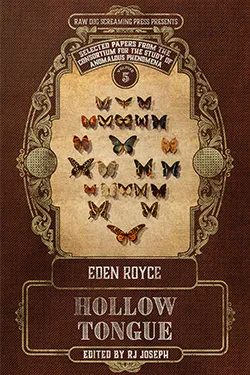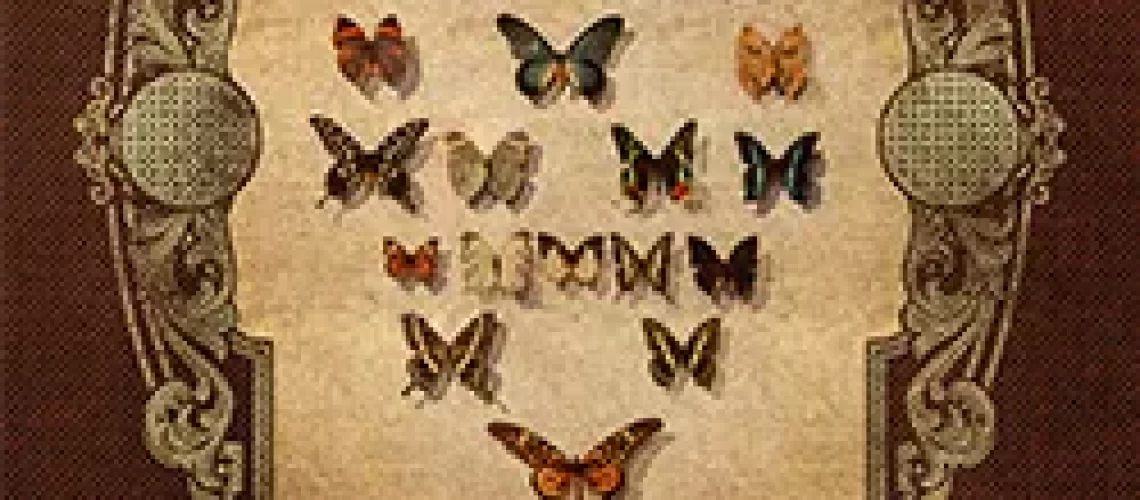In a couple of weeks (16th August) we’ll be running a pre-recorded podcast interview with author Eden Royce about her new middle grade novel, The Creepening of Dogwood House, during our weekly live stream with fan interaction (Fridays at 7PM Central on the Twitch Alphabet Streams channel). And later this Fall, Eden will be joining us as a guest for a podcast episode of At the Movies featuring 1997’s Event Horizon.

But in the meantime, I’m here to let you know about another recent Royce release from Raw Dog Screaming Press: Hollow Tongue. It’s the fifth release in the publisher’s “Selected Papers from the Consortium for the Study of Anomalous Phenomena” novella line, edited by RJ Joseph. Those of you keeping up with the blog may remember reviews of two of the past novellas from this series here.
Known for her Southern Gothic horror writing, Royce writes with the same genre vibes in Hollow Tongue, but approaches the field in unexpected ways that emphasize the psychological horror of trauma and symbolism over physical or supernatural horrors that might be expected from something that could’ve led easily into gothic haunted house tropes. It’s a powerful, carefully constructed novella that could be read in one atmospheric sitting, or in two quick halves. With twelve chapters through under 100 pages, Hollow Tongue manages quick pacing that makes maximal use of its focused setting and protagonist without getting bogged down or dull.
The victim of an event that has left her with physical disabilities and looming financial difficulties, Maxine Forrest receives a timely letter from a Charleston bank that provides an excuse to return to her childhood home. The bank sends warning of closing out a safety deposit box held in the names of Maxine and her mother, which has gone unpaid for a long period. Maxine realizes this must mean that her mother has finally gotten out of the house as Maxine managed years ago, escaping Maxine’s alcoholic and psychologically abusive father.
Returning to the house in “Chucktown” to check for clues to verify her mother’s departure and the state of her father, Maxine is surprised to find the house pretty much as she remembers, but with no sign of either parent – or their current whereabouts. Outside, a lushly overgrown backyard further obscures the strangely silent house. Maxine hopes the safety deposit box will hold some answers, something to allow her to move on into a restored life, reconnect with her mother, and quell the haunting and painful memories of a monstrous man.
The majority of Hollow Tongue consists of Maxine working through her traumatic family memories and her current physical (and financial) predicament from injury. The stronger elements of horror do not come into play until the reveal of the end of the novella, but the payoff is well done, connecting to the symbolic butterfly theme of Maxine’s journey that features both on the book’s cover and makes an appearance to her on the opening page.
Maxine’s disability and familial history might cause a reader to look at Maxine as a character who is facing brokenness, and this novella as a story of overcoming that brokenness to become non-broken or healed. Instead though, Royce’s symbolism of the elements inherent to the biological metamorphosis of a caterpillar into a butterfly show a much different and powerful interpretation. Hollow Tongue points to how psychological traumas can lead to a hardness that could either turn toward monstrosity or beauty.







